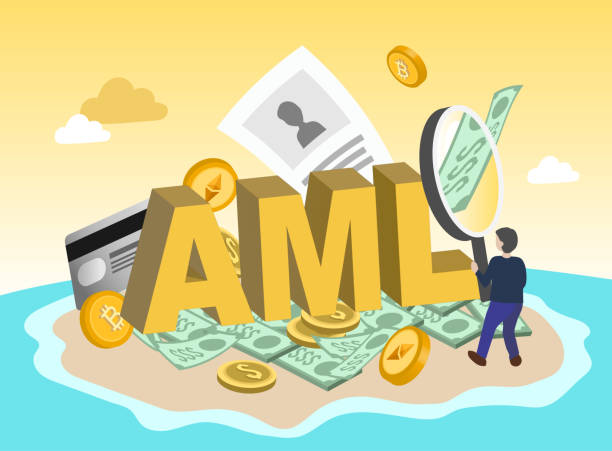
Wash trading is a deceptive practice that has long existed in traditional financial markets, but it has taken on a new life in the world of cryptocurrency and NFTs. With digital assets becoming more mainstream, understanding how wash trading works—and how it can impact your investments is more important than ever.
In this article, we’ll explain what wash trading is, how it applies to crypto and NFTs, and why it’s considered harmful to financial markets.
What Is Wash Trading?
Wash trading refers to the act of buying and selling the same asset, such as a cryptocurrency or NFT, simultaneously or in rapid succession to create a false impression of market activity. The goal is to artificially inflate trading volume or manipulate the price of an asset to deceive other investors.
In many regulated financial markets, wash trading is illegal. However, in the relatively new and often less regulated world of crypto and NFTs, it remains a growing concern.
How Wash Trading Works in Crypto
Wash trading is a deceptive practice that remains a serious issue in the cryptocurrency market, particularly on unregulated or smaller exchanges. In these cases, traders may create two or more accounts and continuously trade an asset back and forth between them. This artificial activity can create a false appearance of market interest, boosting trading volume and misleading potential investors.
For example, if someone owns a newly launched altcoin with little to no real trading activity, they might perform hundreds of self-made trades to inflate the coin’s volume. This false sense of popularity can draw in unsuspecting investors who assume that demand for the coin is genuine.
In some instances, exchanges themselves may turn a blind eye—or even indirectly support—this behavior. Since higher trading volumes can make an exchange appear more legitimate or successful, they may not have strict measures in place to detect or prevent wash trading.
Role of Crypto Wallet Screening
Crypto wallet screening plays a key role in identifying suspicious activity like wash trading. By monitoring the behavior of wallets involved in high-volume, repetitive, or circular transactions, compliance teams and regulators can detect red flags. Screening solutions may track:
- Wallet ownership links (identifying if multiple wallets are controlled by the same entity)
- Unusual transaction patterns (e.g., repetitive buy/sell cycles with little market movement)
- Connections to known illicit actors or high-risk entities
Effective wallet screening tools can help exchanges and regulators prevent market manipulation, protect investors, and enforce transparency in the crypto ecosystem.
Binance and Wash Trading
Even major exchanges like Binance have not been immune to concerns about wash trading. While Binance has strict anti-manipulation policies and advanced detection tools in place, there have been instances where suspicious trading activity has been spotted on its platform.
That said, Binance regularly updates its security and compliance systems to combat such practices. Traders should remain cautious, especially when trading new or low-liquidity tokens.
NFT Wash Trading: A New Problem
Wash trading has become particularly prevalent in the world of NFTs (non-fungible tokens). Because NFTs are unique and often traded on decentralized platforms, it can be easier to disguise wash trades.
Here’s how NFT wash trading typically works:
- A creator mints a new NFT.
- They sell it from Wallet A to Wallet B (both owned by the same person).
- This process is repeated across several wallets to create a fake transaction history.
- Eventually, the NFT is listed at a much higher price, appearing to have a proven track record of increasing value.
This tactic can mislead buyers into thinking the NFT is a hot commodity when, in fact, there has been no real buyer interest.
Wash Trading Example
Let’s say you see a new token called “CoinX” that shows a daily trading volume of $5 million. Impressive, right? But behind the scenes, a single trader or a group of traders might be executing trades between accounts they control, inflating the numbers artificially.
You invest, thinking you’re catching a trend early. But when real demand fails to show up, the price drops and you’re left holding a worthless asset.
This is the risk that wash trading presents, it paints a false picture of success that can trap uninformed or emotionally driven investors.
Why Is Wash Trading Harmful?
Wash trading undermines the trust and transparency that are essential for healthy financial markets. Here are some of the key dangers:
- Misleading volume and price data
- Artificial hype that manipulates investor behavior
- Increased volatility and risk
- Potential legal consequences for traders involved
Regulators are starting to take notice. Several government agencies around the world have begun investigating and cracking down on wash trading, especially in high-profile crypto cases.
How to Protect Yourself
Here are a few steps you can take to avoid being misled by wash trading:
- Stick to well-known and regulated exchanges.
- Be cautious of assets with sudden spikes in volume or price.
- Use blockchain analytics tools to verify transaction histories.
- Avoid making decisions based purely on hype or social media chatter.
Final Thoughts
Wash trading is a serious issue in the crypto and NFT markets. As an investor or trader, being aware of how it works and knowing how to spot the warning signs can protect you from falling victim to artificial market manipulation. Always do your own research and trade responsibly.
